Module "Inline files"
1General
An inline file is a document inserted directly into the SMASHDOCs, thus can be downloaded to the user's computer at any time.
A user is able to create, edit and delete as many inline files in the text component as he wants. In draft component each user can insert, change and delete inline files, in review mode the user should have a role Suggest or Approver to be able to work with inline files.
The following file formats are supported with a maximum file size of 20Mb:
1.doc/docx
2.xls/xlsx
3.ppts/ppt
4.pdf
2Inserting an inline file
To create a new inline file, a user writes text in a text component and then selects “Insert inline file” from the formatting bar or simply inserts an inline file in an empty component.
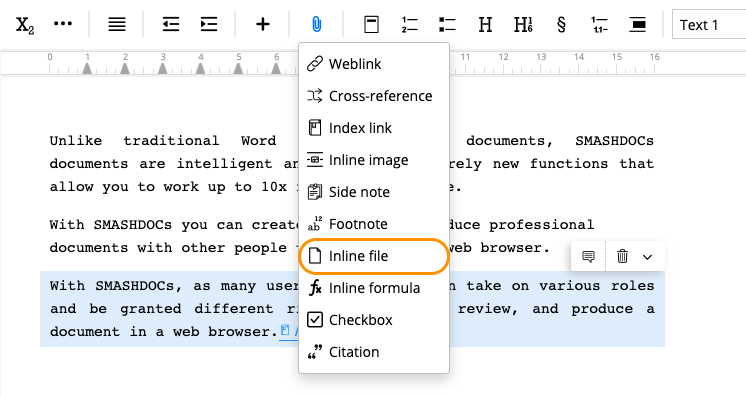
Button for inserting an inline file highlighted in the formatting bar
There the user can define the file by
1. Uploading a new file:
●dragging and dropping an file or
●selecting an file from his computer

Uploading an inline file highlighted
The original file name of each object should be provided. Otherwise, the file upload will not be allowed. Optionally, the user can add a prefix (name of the file type e.g. Annex, File, Attachment etc.) and the description.
2. Selecting an existing file - selecting a file from the inline files that were previously uploaded in the document a user is currently working on.
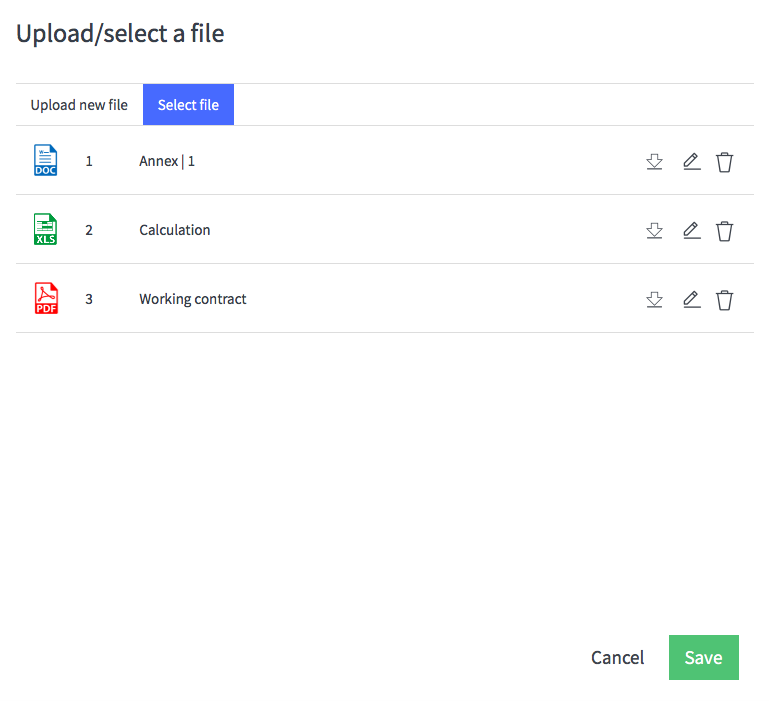
Selecting an inline file from the previously uploaded inline files
In the "Select file" window a user can download, edit or delete a file. The file will be downloaded directly to the computer`s "Downloads" folder.
3Editing the inline file
To edit the inline file you should open the context menu by the right click on the corresponding inline file and choose the function 'Edit'.

The function 'Edit an inline file' in context menu is highlighted
After that the dialog window with the list of inline files appears. You should choose then, which inline file you need to edit and click the corresponding icon on the right.
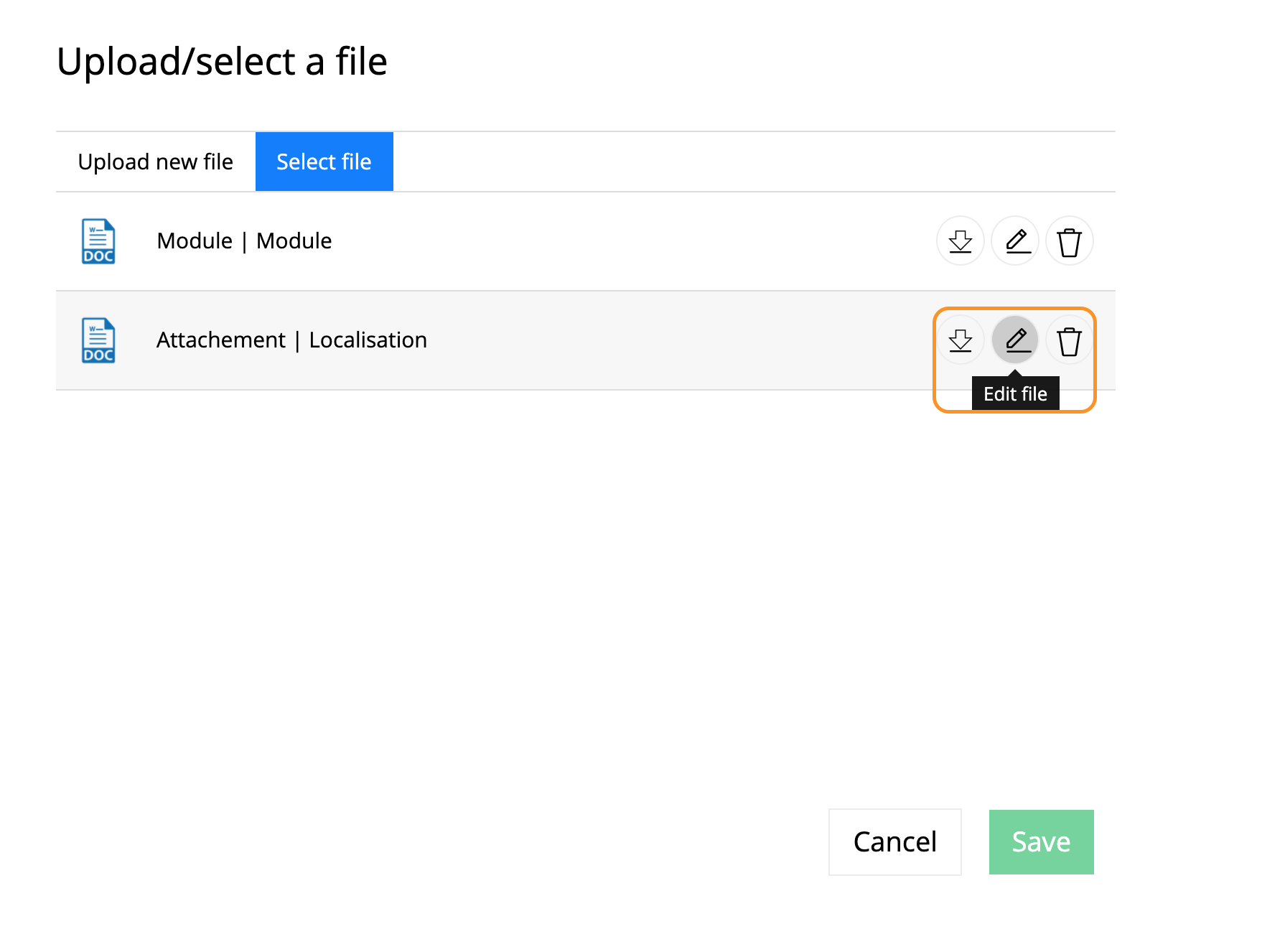
The function 'Edit an inline file' in the list of inline files is highlighted
Then you can edit the metadata of the inline file or upload a new one (see Image 2).
4Display of inline files
Inline files are shown in the order they were added. But in case a user moves the text component that includes an inline file to another position e.g. above the other text component that itself includes inline files, the numbering of all inline files will be adjusted.
The respective icon depending on the file format e.g. pdf, docx etc is shown in the "Select file" window Image 3 and in the list of inline files to each text component Image 6. In the document itself, inline files with different formats have the same icon.
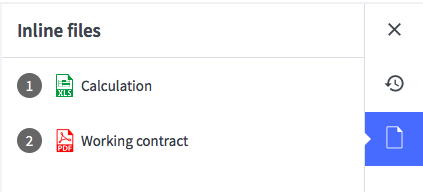
List of inline files inserted in one text component highlighted
All inline files inserted in the document can be found under the tab "Table of contents".
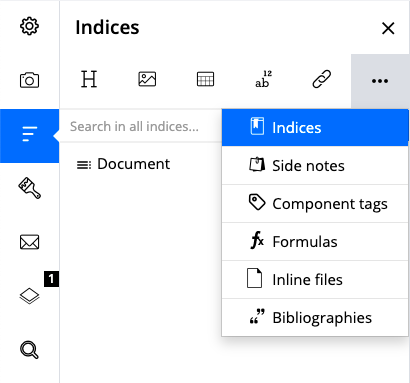
List of inline files highlighted in the table of contents
Let`s take a look on how this works in practice, respectively in legal industry:
I will have a lien on all of your documents, property, or money in my possession for the payment of all sums due me from you under the terms of this agreement. In addition, I am entitled to a charging lien ensuring that, if I elect, payment to me will come from any money you receive as part of the settlement of the issues in your case. More to this see in .
By clicking on inline file in the document inline file is either:
●opened in new tab; or
●downloaded to the computer to the folder defined by the system for downloads.
The inline file can be also downloaded from the context menu (see Image 4) and from the list of inline files in the document (see Image 5).
5How to delete the inline file
If the user deletes the inline file from the text directly, only the link to it or all the links, if relevant, will be deleted.
To delete the file itself from the document, a user has to do it from the "Select existing file" window (see Image 3) or from the context menu (see Image 4).
